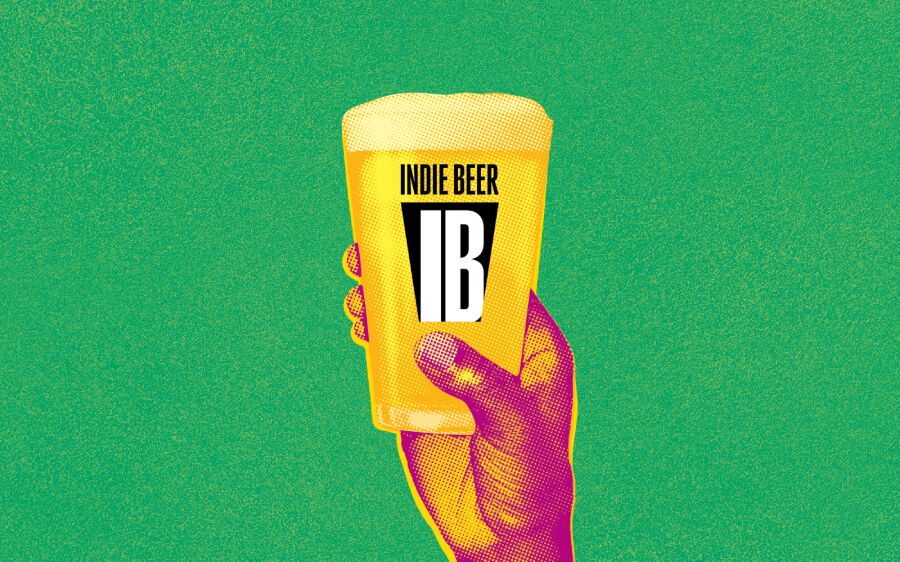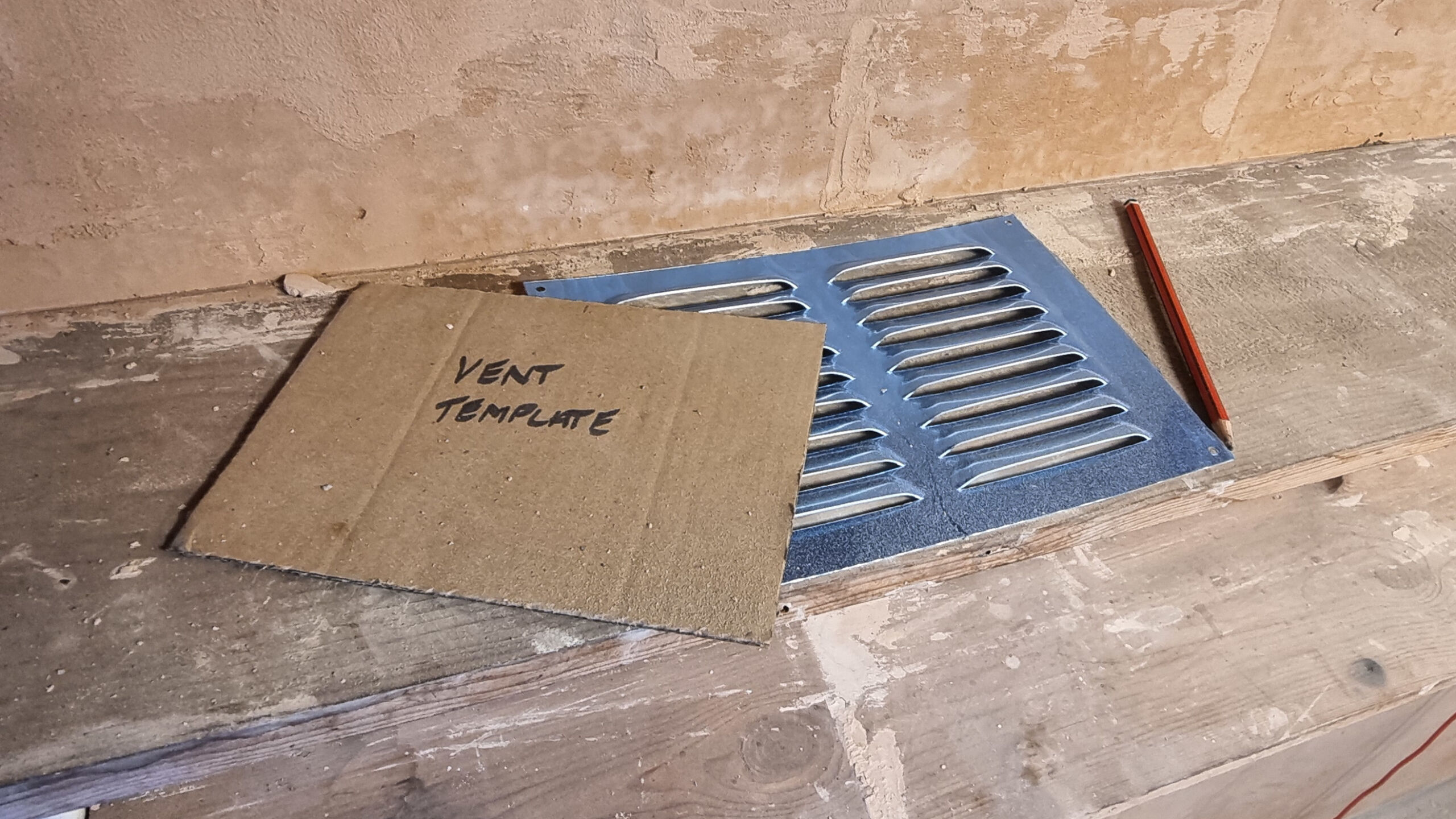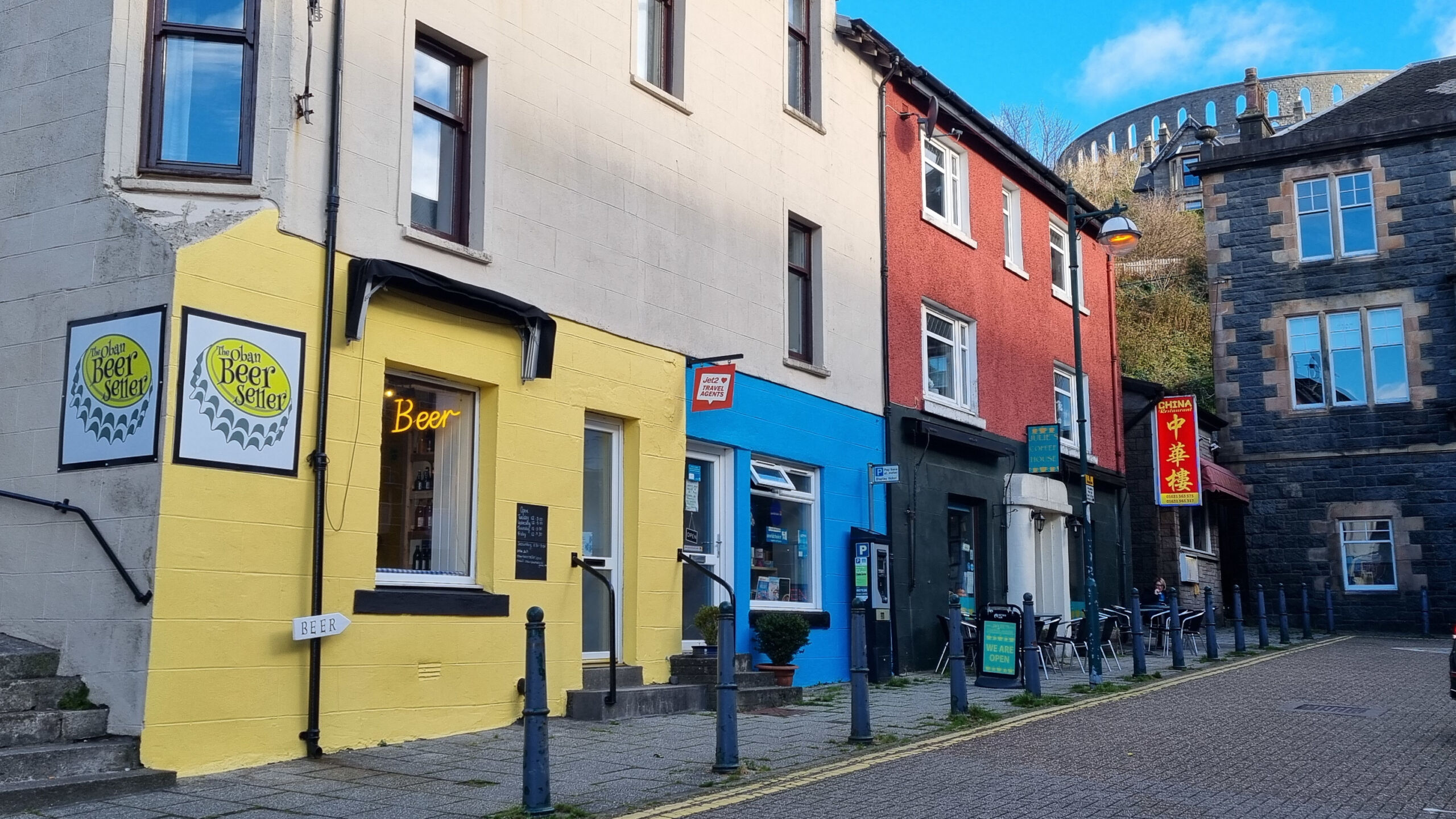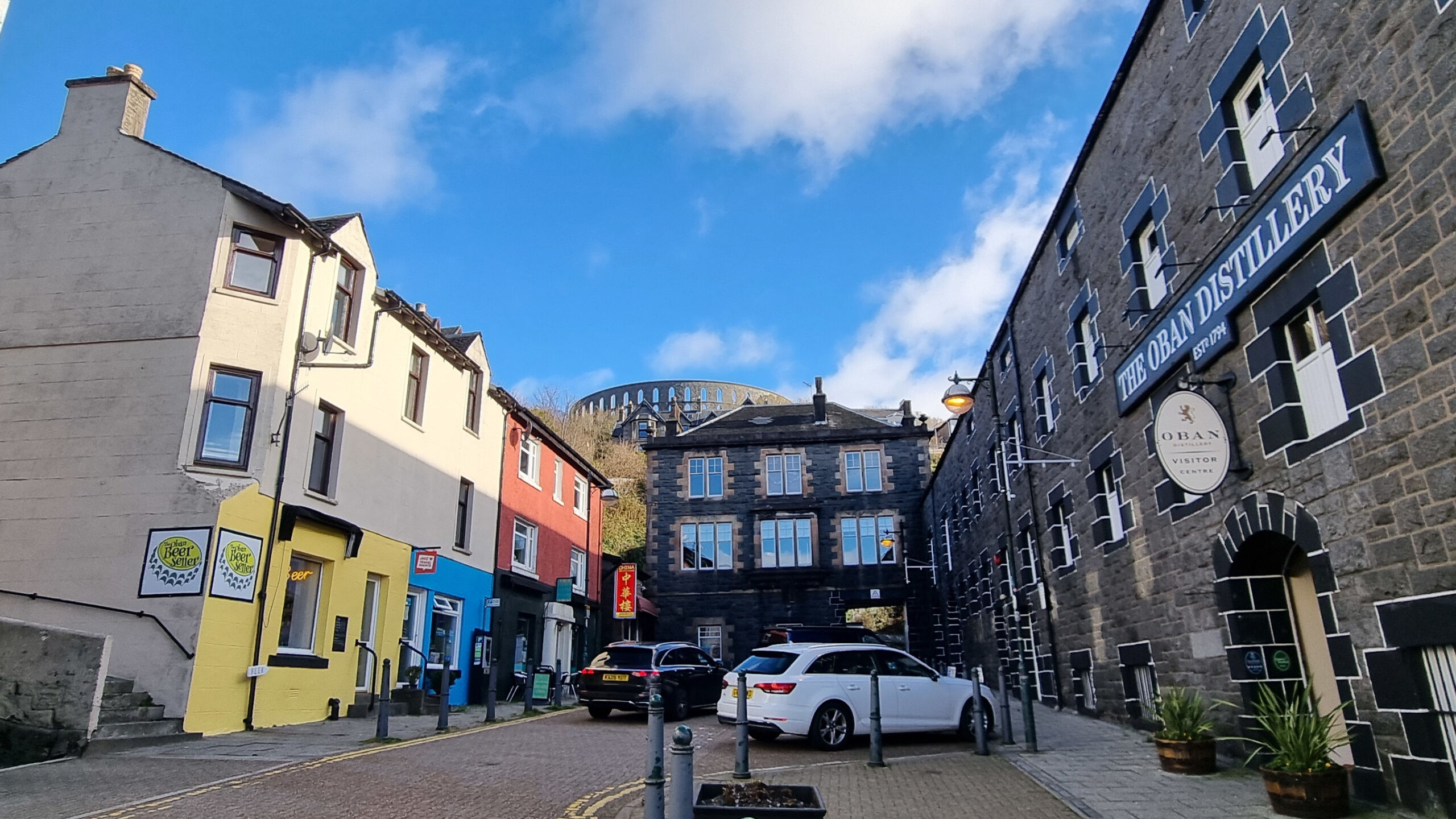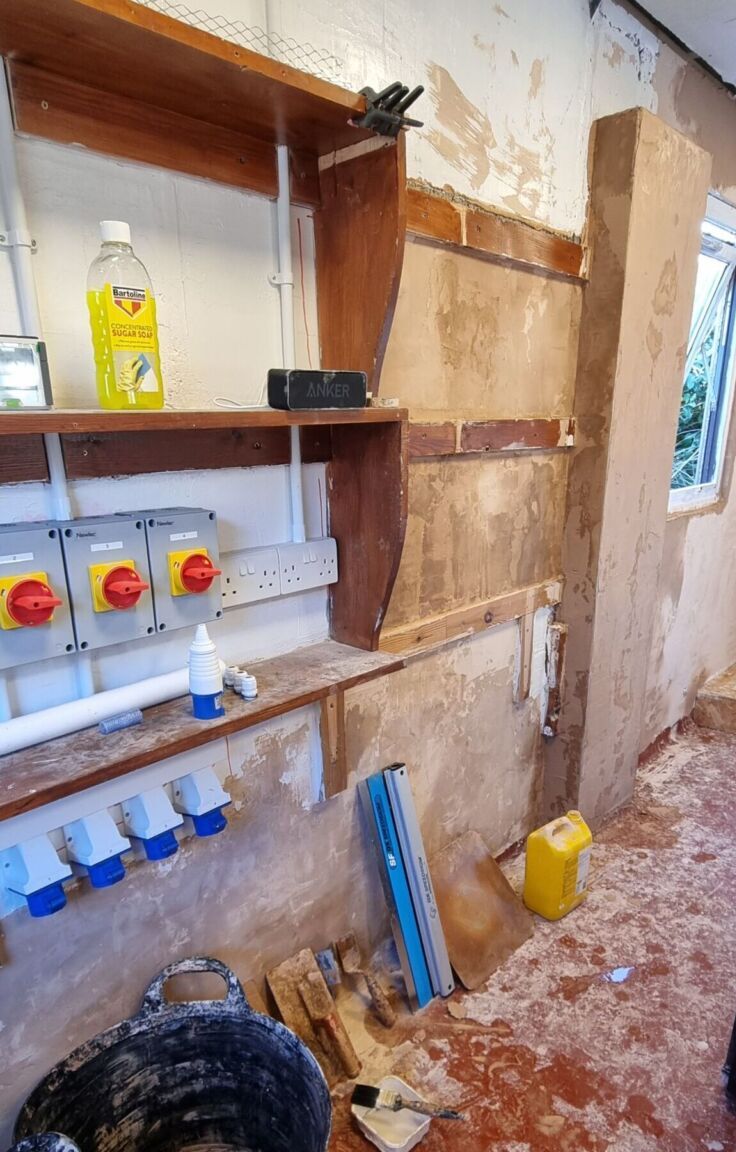When the wind blows
In this month’s update: –
- October winds
- Fitting brewery ventilation
- The Oban Beer Seller
- Orkney Perfumery
- Tasting a barleywine
- SIBA’s regional meeting
October winds
I mentioned last month that the nights were fair drawing in. October saw the days continue to get windier, darker, shorter and colder. Even with my lark like tendencies, it’s becoming a bit more of a struggle to get up in the morning and come downstairs to the cold of the kitchen for that first cup of tea of the day.
We have had some fantastic weather this year and it really felt exceptional to have a week of almost unbroken sunshine in the summer when the International Island Games were on.
The large number of visitors we had to the islands this year, boosted by the Island Games may have been given a false sense of what the weather can really be like here. Quite a few may have been tempted to make the move up North as a result, but if visiting folk really want to see how brutal the weather in Orkney can be, they would do well to spend some time here in the winter months.
Down South when high winds hit, it’s a big news story, but when we actually had hurricane force winds last winter causing quite a bit of damage, it never got a mention on the news down South.
Storm Amy
Storm Amy came through at the start of the month and knocked us around a bit. This storm was less damaging for us this month than earlier ones as the trees had shed a lot of their leaves so we lost fewer branches.
October had quite a few monthly gusts up to 55 knots (63 mph/storm force 10), it’s 7 degrees Celsius outside as I write this in my cold, North facing office. The curtains are closed, but it’s so foggy outside you can’t see beyond the garden.

Trickle treat
This windy October coincided with my next big task of fitting trickle ventilation in the brewery. This entailed drilling out six new ventilation holes in the concrete blockwork, cleaning them out, squaring the edges off and fitting metal ventilation grilles both inside and out.
It took me a wee bit longer than I’d anticipated. I had the task down as maybe three days work originally. Oh no, not at all. I finally got it all done after 13, albeit not full days, work.
There were a few days when the newly cut holes were covered with cardboard and taped up at the end of the day or when I was working on preparing a clean surround for the grille holding screws to embed into. During these times the ventilation was definitely not “trickle” as the wind howled about the brewery building, blew off my temporary coverings and blasted my face as I worked at the holes. It was a relief to finally get the outside metal grilles on in place and screwed in securely.
The brewery plans require me to have a certain volume of trickle ventilation capability. It is a very sensible requirement as I’ll be dealing with carbon dioxide a lot during the brewing process. Indeed the brewhouse is already fitted with a CO2 alarm monitor and I’ll be adding another one to the store where the filled kegs will be stored for maturation and ageing of the beer.
The Oban Beer Seller
I had a short trip down to Oban again and popped into The Oban Beer Seller.
Karen’s brilliant wee shop is just opposite Oban Distillery, right in the centre of town. Back in the day when I worked in Belgium there was nothing like this kind of shop in the UK. Beer choices were very limited and visits back to Britain from Antwerp were bleak on the beer front.
The Oban Beer Seller is the sort of shop offering a range of amazing beers which until recently you would have most likely expected to have found in trendy London craft beer bars and bottle shops, such as the Cask Pub and Kitchen in Pimlico or the Beer Merchants’ Tap in Hackney.
I remember Karen’s shop from my younger years when it was a florists. Now the shelves are stacked with equally heady and beautiful produce.
The Oban Beer Seller’s socials showed that she had some Sinnister Brew beers in. I was very lucky that these excellent beers were still in stock when I visited.
They’re on my shelf back in Orkney now and I’ll be savouring them over the dark, cold and windy nights to come.
It’s brilliant to see Karen supporting independent Scottish breweries and you cannot get more local than some of the beers she stocks.
Orkney Perfumery launch
I was delighted to be invited to the launch of Orkney Perfumery in October. This was a very well thought out and beautifully presented event at the Old Library in Kirkwall.
As I arrived a piper had just stopped playing outside and Orkney Perfumery’s logo was swaying in the breeze on flags flanking the entrance to the Old Library.
It was an event well attended with a delicious champagne buffet lunch for guests. The lunch was followed by a reveal of Orkney Perfumery’s scents and some potential new scents that Claire, the business owner was looking for feedback on.
There were a number of sensory stations where you could wander round and really get a feel for the concept of scent memory and to see where Claire has drawn inspiration from for her range of perfumes.
Lastly there was a table where her scents could be purchased and as I slipped away to another appointment, it was doing a brisk trade and quite the queue had formed.
I wish Claire every success with her new venture.

Tasting a two year old barleywine
Northern Latitudes Brewery beers will be matured for an extended period of time. With so much of the beer market dominated by intensely hoppy IPAs and the mass produced lagers, many folk have not experienced the wonderful transformation that a beer can undergo when it is a suitable style and is allowed to age under the correct conditions.
Weaker hoppy IPAs lose their aroma relatively quickly and are designed to be ready for market quickly and drunk young. With breweries under so much financial pressure, it is easy to see the appeal of a faster turnaround in bringing a beer to market and sold. For these styles, longer maturation times tend not to improve the beer, but dull its brightness so that it becomes boring and two dimensional.
Some beers age very well
If you have a suitable beer style, such as a barleywine, as a brewer, it is fascinating to observe through careful and structured tasting every month or so, how a beer’s flavour profile changes.
Beers, when young, can taste bright and sharp edged. For some styles this is desired, but if the beer is stronger and potentially more malt forward, then that bright edge and youngness slowly gives way to a smooth richness over time. If it is a good recipe then the flavours get to know each other and harmonise. The beer remains balanced and delight to savour slowly.
This delicious development in flavour is the same as that seen for fine wines, whiskies and brandies. It is well known that these are matured and aged for years. Folk may not be so aware that this maturation and ageing process can equally be applied to suitable beers.
Patience is a virtue
I’ve been working on my beer recipes for many years and I have a barleywine recipe which as a homebrewer I brewed a couple of years ago. This month I opened one and started to fill in the sections of my tasting notes form. I do not look at the previous tasting session’s notes so that I’m not swayed by what I have written previously. It is always fascinating to read back and see how the flavour profile has developed.

Each to their own
All beer tasting is subjective and whether you like a beer or not is entirely down to your own preferences, but I was delighted with this one. It has been good and getting better for a long time. This tasting session for me, was perfect.
I’ve been quite strict about which recipes I’ll allow to go forwards to make up the brewery’s range. This one has definitely made the cut and I’ll be putting it into production when the brewery opens.
SIBA Scotland regional meeting
I’m a member of the Society of Independent Brewers and Associates and I remotely attended their Scotland regional meeting in September.
SIBA’s vision is that: –
“The United Kingdom will have a vibrant, thriving and sustainable brewing industry. We want customers to choose, and be able to choose independent beer at a fair price to all”
SIBA champions independent breweries and has a number of pillars in their strategy.
- To create the conditions for member breweries to grow market share
- To increase fairness in the industry, by and for brewers
- To promote independence and challenge the dominance of global brewers
- To empower members to increase profitability
- To put sustainability at the centre of everything we do
A craft brewery’s always independent right?
I think that in general, when asked, folk would say that craft beer is a good thing and if they had the choice, they would prefer to choose a craft beer from a small, independent brewery. This is laudable as I’m sure folk would be pleased that they are helping a small, independent business bring something taste worthy, interesting and of artisanal quality to the market. This is what craft beer should be all about. It is a movement which has been going for quite some while now.
Indeed one of the key characteristics of a “craft brewery” is :-
“Small and independent: Craft breweries are typically small-scale, independent businesses with a significant portion of ownership held by the brewery itself, as opposed to being owned by large corporations.”
Nothing stays untainted for long unfortunately and the global brewing conglomerates saw an opportunity. They didn’t want to miss out on tapping into this new, potentially very profitable craft beer market.
All is not as it seems
Camden Brewery – founded in 2009 in London. Has a lovely startup story about its founder unable to find local, high quality beers, so he began brewing in the basement of his pub. The brewery was acquired by AB InBev in 2015. AB InBev’s 2024 turnover was approximately $59.8 billion.
Beavertown Brewery – founded in 2011 in London, the owner started brewing in his kitchen. Heineken acquired a stake in 2018 and acquired Beavertown fully in 2022.
Even older traditional independent breweries have suffered the same fate. Founded in 1845, a family run business, Fullers in Chiswick, was acquired by Asahi in 2019.
One of the great problems here is that folk believe when they are buying a craft beer they are buying from a smaller, independent brewery. This is often just not the case.
This is where SIBA hopes, through its Indie Beer campaign (Craft is sadly a tainted word now), to raise awareness about where that beer you are buying, which will definitely not be a cheap beer these days, comes from. Is it what you believed you were buying?
Independents are fighting to survive
In their 2025 independent beer report, 46% of independent breweries cited survival as their biggest priority. This is up from 43% in 2024.
SIBA selected 12 beers, 6 of which were from truly independent breweries and 6 from breweries that used to be independent, but are now owned by global companies. They asked which of these beers did people believe were truly independent?
The top two responses were for Camden Helles and Beavertown Neck Oil. When told that these breweries were not independent 75% of the general population asked and 83% of beer drinkers said they felt misled.
Is your beer from a truly independent brewery?
You can check if a UK brewery is truly independent using the link below.
What’s next?
As far as the brewery build is concerned, it will be more of the same. I have work to do with installing the brewery sink. Once that and the drainage is in place, I’ll turn my attention to the back brewery area where the can filling and seaming will take place. I also make a start on building the brewery store.
